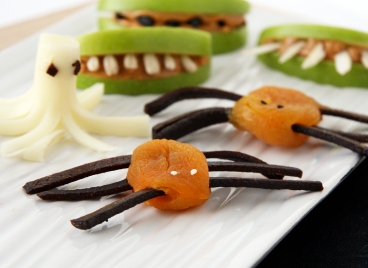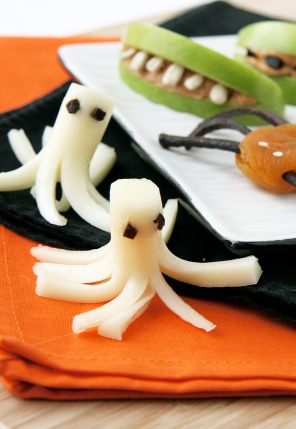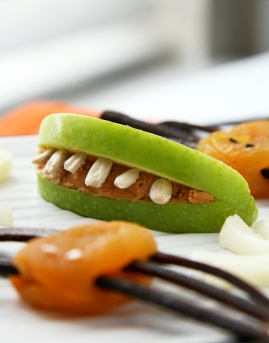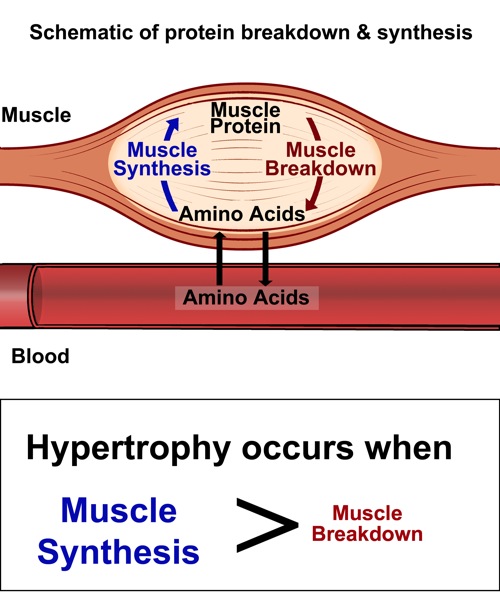FOODS THAT FIGHT & WORSEN INFLAMMATION
Inflammation is the body’s natural response to an injury or infection caused by anything from allergies and toxins to a virus or blunt injury. Common types of inflammation plaguing individuals in combat and impact sports or extremely physical training regimens include acute inflammation as a result of a physical injury or trauma; low-grade chronic inflammation caused by stress within the body as a reaction to an environmental trigger; and chronic inflammation as a result of an injury that never healed completely or properly.
Depending on the site and cause of damage, the response is slightly different. But ultimately, the body calls on immune cells to begin fighting the injury by destroying cells and repairing damage at the site of invasion. Inflammation may be better understood when viewed as an immune response.
The immune response is quite simple. Damaged cells release histamine, bradykinin and prostaglandins. These cause surrounding tissues to be inhabited by fluid, which leaks from blood vessels. The result is swelling, which helps contain the infection during the healing process. White blood cells are drawn to the site and begin consuming the invading cells. This process is called phagocytosis.
While there are many physical treatments that address the result of inflammation in the body, this article will focus primarily on nutrition. We’ll take a look at the top foods that fight inflammation as well as foods that contribute to it.
Top 5 Inflammation-Fighting Foods
1.
Cultured or Fermented Foods
The most common examples are plain yogurt and kefir. Other foods fermented by the probiotic group lactobacilli include sauerkraut, pickles and kimchi. However, most commercially prepared versions of these foods are not lacto-fermented and have been prepared with vinegar instead. Look for versions that specifically say they have been made through lacto-fermentation to make sure you’re getting these good bacteria aplenty. Or, opt for making your own yogurt or sauerkraut. These powerhouse bacteria provide many benefits to the body, and chief among them is boosting the immune system and fighting inflammation. They also allow the vitamins and nutrients from the foods you eat to be better digested and utilized by the body. These foods should be eaten every day, preferably multiple times a day, for the most benefit.
2. Oily Fish
Salmon, sardines, mackerel, trout, herring and tuna are rich in omega-3 fats, which are known inflammation fighters. In general, wild caught fish is healthier than farm raised. Farm raised fish have been given antibiotics, contain 10-15 percent more fat versus protein, and have more omega-6 and less omega-3 fatty acids. Add oily fish to your diet twice a week. Pregnant or nursing women should avoid King mackerel due to its high mercury content.
3. Onions and Garlic
These super meal enhancers boast nutritional benefits to boot. They contain quercetin, an antioxidant that fights inflammation. Cook your meats and vegetables with some chopped onion and minced garlic. Add raw onion to fresh salads. Onion and garlic are also great added to soups, stews and slow cooker dishes.
4. Ginger and Turmeric
These tasty spices help fight off attacks by ingredients
called gingerols and curcumin, respectively. Turmeric produces a mild, spicy flavor and a bright yellow color and pairs well with cinnamon and cumin. It tastes great on cooked squash, brown rice or quinoa, or on poultry as part of a tagine-style dish. Fresh ginger can be added to anything from stir-fry meat and vegetables to hot tea.
5. Nuts and Seeds
Choose types that have higher amounts of omega-3 versus omega-6 fats. Pumpkin seeds and flax seeds are among the highest omega 3-rich seeds, while walnuts and macadamia are great nut sources for omega-3. By eating 1 oz. of nuts or seeds a day, you will also enjoy the benefits of reduced risk for chronic disease and illness. Nuts and seeds also add protein and fiber to the diet, helping with feelings of fullness and satisfaction, and aiding in weight management. Eat a handful of nuts for a snack, and add seeds to oatmeal, stir-fry dishes or fresh salads.
Honorable Mentions: Apples (contain quercetin), broccoli (high amounts of vitamin C, folate and beta carotene) and cranberries (rich in antioxidants).
Top 5 Inflammation-Causing Foods
1. Refined Sugars
As if there needed to be another reason to avoid sugar, here it is. Sugars contribute to inflammation in a major way. Non-sweet foods that cause a high insulin response cause inflammation, too. So in addition to refined sugars and high-sugar sweeteners, be careful of eating high-glycemic foods such as processed and refined grains, high-starch vegetables and potatoes. Read food labels to be sure you’re not getting them from a hidden source. Instead, opt for lower-glycemic, natural sweeteners like raw honey and Stevia.
2. Food Additives
This includes trans-fats, aspartame, MSG, sulfites, nitrates, artificial colorings and preservatives. Processed foods, restaurant and fast foods are the worst sources of food additives. Avoid or limit dining out to once a week or less. Create your own home-cooked versions of your favorites, such as sesame chicken and pizza. Choose breakfast and processed meats that are natural, uncured and do not contain hormones, antibiotics or nitrates/nitrites.
3. Polyunsaturated Fats (PUFAs)
Because these fats are unsaturated, many people think they’re healthier options. However, PUFAs (found in vegetable, grape seed, safflower and sunflower oils) are extremely high in omega-6 but nearly void of omega-3, a combination that promotes inflammation and breeds inflammatory diseases. The weak and vulnerable structure of PUFAs makes them susceptible to structural changes through hydrogenation, processing and cooking. Even extra virgin olive oil is susceptible to heat damage during cooking. When these fats get oxidized, they prohibit inflammation and have been linked to various chronic diseases, including cancer. The best fats for cooking are stable and saturated, such as coconut oil, butter or ghee and animal fats.
4. Commercially-Raised Meat
All grocery-store and restaurant meats, unless otherwise specified, come from animals fed a diet high in omega-6 grains and feed. They also contain toxins in the form of pesticides, hormones and antibiotics. While pricey, your best bet is to acquire a source for grass-fed, farm raised meat, poultry and eggs. Check your local farmer’s market or visit EatWild.com.
5. Highly-Allergenic Foods
Some individuals, due to weak immune systems, nutrient deficiencies, low stomach acid, lack of beneficial bacteria, or other reasons, are allergic or intolerant to foods that most people can easily digest and enjoy on a regular basis. The most common among these are wheat and other grains containing the protein gluten, dairy due to the protein, casein, or the milk sugar, lactose; soy, corn, nuts and eggs. If you suspect food intolerance, the best course of action is to try a food elimination diet for two weeks. Upon reintroduction of each food one at a time, it should be fairly easy to tell if you have a reaction to it. Reactions will include allergy and immune type responses. Keep a food diary, see how you feel, note your mood and digestive system health.
Misdemeanor Offenders: Alcohol (irritates esophagus, larynx and liver and can lead to cancer) and red meat (some people are sensitive to high amounts of arachidonic acid, a fatty acid rich in red meat).
--------
Supplement It!
Probiotics – In addition to eating cultured foods, a good probiotic supplement can yield many of the same benefits. Look for a brand containing at least 6 strains of live bacteria, with at least two from the Lactobacilli group and two from the Bifidobacteria group. We have some great Probiotic products in the store, mention this blog and receive 25% Off!
Bromelain – This fighter comes from pineapple, and in addition to anti-inflammatory properties, it acts as a digestive enzyme for proteins.
Fish Oil – In addition to including oily fish in your diet, taking a daily fish oil supplement will provide a consistent amount of omega-3 fatty acids.
Glucosamine – This supplement helps in joint and cartilage repair and growth. It’s been shown to be effective in treating multiple types of arthritis and inflammatory bowel disease.
--------
Other Ways to Fight Inflammation
– For chronic pain, old injuries and scar tissue, consider non-invasive treatments. Dr. Todd Sullivan, DC, of NOVA Chiropractic & Wellness points out that “Foam rolling, Active Release Techniques and Graston Technique are also great muscle therapies to reduce tissue inflammation.”
Flexibility
– By engaging in regular, structured stretching programs, your body maintains better balance among opposing muscle groups, greatly reducing your risk of injury in the first place.
Icing
– Dr. Sullivan also recommends icing for 10 to 15 minutes at a time, allowing the muscle to come back to room temperature before repeating for a total of four cycles.
Compression Apparel
– Clothing such as socks, tights and shirts, and ergogenic aids including wraps and braces can help, too. Dr. Sullivan adds, “Compression clothing improves circulation and reduces swelling"














